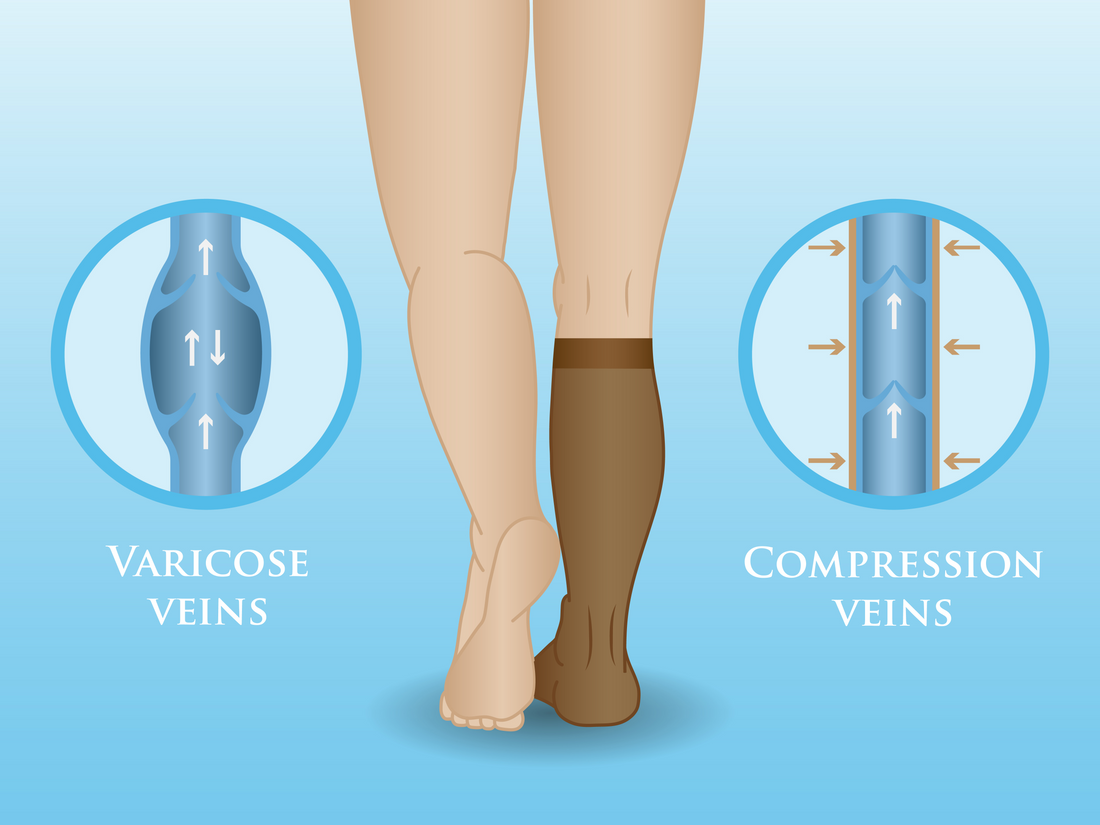
The benefits of compression stockings for nurses
Share
Should you wear compression socks as a nurse?
Nursing is one of the most rewarding careers you can choose, and they profoundly impact the lives of many people every day. As a nurse, you spend a lot of time working long hours on hard floors, with shifts typically lasting 12 hours or more. Being comfortable and having the best medical scrubs, compression socks and accessories will make your shift easier while maintaining your image as a medical professional.
Compression stockings provide compression therapy and are generally recommended for nurses. Fitted snugly and highly elastic, these socks are designed for people who stand for long periods of time. Here's why nurses should wear compression stockings on their feet at work.

Reasons to wear compression socks
Nursing is tough work, and taking advantage of it is essential when you find something that will make your day easier and your life better. Every nurse will tell you the difference in compression socks. If you feel pain and discomfort at work, it will affect your attitude and productivity.
Reason #1. Compression stockings reduce leg fatigue, muscle pain, and swelling of the feet and legs.
Compression socks help improve blood circulation by putting pressure on the calf and reducing lactic acid buildup in the muscles. It reduces leg fatigue, swelling, pain, and allows for faster recovery from long, hard work.
Reason #2. Compression stockings can improve symptoms of varicose veins and spider veins in the legs.
Working on your feet for long periods of time can cause blood to pool in your lower extremities, which can lead to varicose veins. Compression stockings improve circulation and reduce swelling, relieve symptoms and slow the progression of varicose veins.
Severe cases can lead to deep vein thrombosis, in which a blood clot can develop in the leg or thigh and can rupture into an embolus that can travel into the lungs. When choosing compression socks, it is imperative to wear the appropriate compression level and size.
Reason #3. Compression socks add supportive, gentle pressure to feet and legs.
Compression stockings help provide gentle pressure on the calves, feet, and ankles, helping to improve blood circulation and prevent blood pooling in the calves.
Reason #4. Compression stockings are easy to put on, comfortable and convenient.
The elasticity ensures that your compression socks stay in place even during heavy exercise. They are also easy to take off and take off. However, you'd better replace it every five to six months.
Reason #5. These designs are professional and attractive.
Nurses working in a hospital or clinic must wear scrubs and medical clothing to reflect the professional nature of their environment. Compression socks come in a variety of solid colors and patterns. Nursing scrubs and socks are an easy way to personalize your uniform.
The benefits of compression stockings for nurses
Beyond Compression Socks: A Nurse's Guide to Leg and Foot Self-Care
Reduce leg soreness and swelling.
Nurses tend to stand for long periods of time, sometimes 12 hours or more. When they are not standing, they are still sitting for that time. This means that blood must defy gravity for a long time to return to the heart. This can cause blood pooling and swelling in the legs. This swelling can cause the legs to feel sore.
Compression stockings are made from the strongest elastic fibers at the foot and ankle and gradually work up toward the knee. They help force blood back to the heart. When blood circulation is normal, nurses have less swelling and less pain in their legs than when they have poor blood circulation.
Reduce varicose veins.
Varicose veins occur when your veins become enlarged, dilated, and fill with blood. They tend to be bluish-purple in color and are most commonly found on the legs. They can also be called spider veins. Varicose veins are common among nurses. Compression stockings help reduce varicose veins by pushing blood from the legs back to the heart instead of pooling in the veins, making them blue and swollen.
Helps fight mental fatigue.
We mentioned above about the pain and swelling that can be caused by standing and sitting for long periods of time. It's hard to think when your body is aching, aching, and tired. When you, as a nurse, relieve pain and swelling in your legs, you can think more clearly and take better care of your patients than you would when you had to deal with this type of discomfort.
When should nurses start wearing compression stockings?
Many young nurses mistakenly believe this is something they should start later in their careers. Nothing is farther than the truth. You want to start early because compression stockings can prevent varicose veins from showing up. In addition, fatigue and discomfort can occur at any age and, as mentioned above, can affect your level of performance with patients. To prevent this, nurses should start using compression stockings even early in their career.
Things to Consider When Buying Compression Socks
proper compression level
Choosing the correct compression level is critical, as the wrong compression level may not work for you. If you are a nurse who is more likely to be active, you can choose compression stockings with a milder level of 8-15 mmHg (mmHg + millimeters of mercury, a unit of measurement of pressure).
comfortable
You may want to make sure your compression socks are comfortable and that you can wear them throughout your shift. When buying compression socks, the fabric of the socks should be made of cotton.
Cotton is known for its breathability and comfort. Consider whether the material is safe for your skin to avoid any irritation or allergic reaction.
quality
A good quality compression stocking will last a few months, and while a good pair of compression stockings may cost a little more, the quality is worth the investment.










